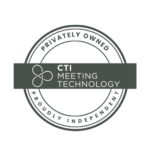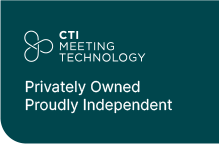Bringing an event life involves a multitude of moving parts. The secret to orchestrating a successful event that leaves all attendees and participants satisfied? A well-defined event planning timeline.
Your event planning timeline is your roadmap to success. It’s a comprehensive schedule that breaks down every task involved in organizing your event, assigning deadlines, and identifying responsible parties. A reliable meeting planning timeline lays the crucial foundation for a successful event.
The Importance of Setting a Realistic Timeline
In the fast-paced event management industry, a planning schedule is not option but a requirement. Setting a realistic timeline isn’t just about ticking boxes; it’s about building a solid foundation for a stress-free and triumphant event. Here’s why:
- Less Stress: A detailed timeline breaks down seemingly monumental tasks into manageable steps, making the entire process less daunting and more achievable. Also, you get a small sense of satisfaction every time you check off a task of your list!
- Ensures Nothing Falls Through the Cracks: By mapping out every detail, from securing the venue to ordering name badges, you minimize the risk of last-minute issues and forgotten processes.
- Resources are Better Utilized: Knowing when specific tasks need to be completed allows you to allocate your budget, team members, and other resources effectively.
- Keeps Stakeholders Aligned: Sharing the timeline with your team, clients, and stakeholders ensures everyone is on the same page regarding deadlines and responsibilities.
- Allows for Contingency Planning: A well-thought-out timeline incorporates a contingency plan for several potential situations, allowing you to navigate unexpected challenges or delays without derailing the entire event.
- More Confidence: With a clear plan in place, you can approach each stage of the planning process with greater confidence and less anxiety.
What to Include
Of course no meeting is exactly the same, and the beauty of an event planning timeline lies in its adaptability. While some specific elements will vary depending on the size, scope, and format of your event, some core components are almost always included:
- Key Milestones: These are significant checkpoints in your planning process, such as securing the venue, launching registration, or finalizing the speaker lineup and agenda.
- Deadlines: Each task should have a clear and realistic deadline assigned to it.
- Responsible Parties: Clearly identify who is accountable for completing each task.
- Dependencies: Some tasks may depend on the completion of others. Your timeline should reflect these dependencies to ensure a logical workflow.
- Budget Allocation: While your overall budget is defined early on, the timeline can include reminders for when specific payments are due or when budget reviews should occur.
- Marketing and Communication: Outline key marketing and communication activities and their corresponding timelines.
- Technology Integration: Incorporate tasks related to selecting and implementing event technology, including your mobile event app.
Now, let’s get down to the nitty-gritty and explore a comprehensive event planning timeline, month by month. Remember, this is a general framework, and you’ll need to adjust it based on your specific event needs, but we hope this can give you a good kickstart to your planning journey.
12 Months in Advance: Laying the Foundation
You can start planning as soon as your last meeting wraps up. But in general, with a year to go, you have a great opportunity to strategically plan and set the stage for a successful event.
- Define Your Event Goals and Objectives: What do you want to achieve with this event? Increase brand awareness? Generate leads? Foster networking? Clearly defined goals will drive the rest of decisions you will take during the planning stage.
- Establish Your Event Budget: Determine the total financial resources available for the event. This will influence everything from venue selection to catering options. Be realistic and create a detailed budget breakdown, always keeping an extra amount aside for any last-minute changes.
- Choose Your Event Format and Theme: Will it be in-person, virtual, or hybrid? What kind of atmosphere do you want to create? Also, a compelling theme can enhance attendee engagement and create a memorable experience.
- Identify and Research Potential Venues: If your event is in-person or hybrid, start exploring locations that align with your event size, and budget. Consider factors like capacity, accessibility, and available amenities.
- Reach Out to Key Suppliers: Begin contacting potential caterers, AV technicians, decorators, and other essential suppliers to get preliminary quotes and assess their availability.
8-6 Months: Solidifying the Core Elements
As you move closer, it’s time to lock in crucial details and start building buzz.
- Confirm Your Venue and Sign Contracts: Once you’ve found the perfect location, finalize the contract and secure your dates.
- Finalize Sponsorship Packages and Begin Outreach: If your event relies on sponsors, develop attractive packages and start reaching out to potential partners, including those from past meetings.
- Develop Your Event Agenda and Program: Outline the sessions, speakers, activities, and overall flow of your event, including a variety of formats and sessions to keep attendees engaged. In the topic of engagement, consider incorporating interacting elements such as polling or Q&A.
- Initiate Marketing and Communication Efforts: Start building awareness through your website, social media, and email list. Highlight the theme of your event and tease key speakers to keep attendees interested.
- Set Up Your Event Registration System with Early-Bird Pricing: Choose a user-friendly platform and launch registration, offering early-bird discounts to incentivize sign-ups by creating FOMO.
- Set Up Your Mobile Event App: A robust mobile event app is a game-changer for communication, networking, and enhancing the attendee experience. Start exploring options and customizing the app with essential information like the agenda, speaker bios, venue maps, and networking features.
- Issue Your Call for Abstracts: If your event includes presentations or workshops, send out a call for submissions well in advance to ensure you’re offering relevant and interesting content.
- Begin Communication with Confirmed Speakers: Introduce yourself, provide them with key information, and discuss their presentation requirements.
3 Months Earlier: Fine-Turning and Engagement Focus
With three months to go, the focus shifts towards actively engaging potential attendees and finalizing logistical details.
- Open Registration and Ramp Up Your Marketing Efforts: After early-bird registration, you can still reach out to potential attendees to get their tickets. In order to increase the expectations and highlight the unique value proposition of your event, launch a full-scale marketing campaign across multiple channels.
- Finalize Your Event Agenda and Confirm Speaker Details: Ensure all speaker presentations are confirmed, and their logistical needs are being addressed, making sure that the most anticipated sessions don’t overlap each other.
- Integrate Interactive Tools and Features into Your Mobile Event App: Enhance attendee engagement by incorporating features like live polling, live Q&A sessions, surveys, and networking forums within your mobile event app.
- Finalize Your Event Platform and Tech Setup: Ensure your virtual event platform is robust, user-friendly, and equipped with the necessary features for a seamless experience. When it comes to technology, you need to make sure that all tools integrate seamlessly with the virtual platform and with each other. Choosing an event software provider (like CTI) that offers all modules from start to post-event, including API integrations, solves this problem.
- Arrange Travel and Accommodation for Speakers and Key Attendees: Book flights and hotels, and communicate all relevant details clearly.
- Follow Up with Suppliers and Finalize Contracts: Confirm all details with your caterer, AV team, event tech providers, and other vendors.
- Determine and Implement Necessary Security Measures: Ensuring the safety and security of all attendees and staff is compulsory. Review the venue security measures and ensure your virtual platform is GDPR-compliant and includes strong security measures.
The 2-Month Mark: Building Buzz and Anticipation
Two months out, it’s all about generating excitement and driving even more registrations.
- Implement Targeted Marketing Strategies to Reach Specific Audience Segments: Tailor your messaging to resonate with different groups of potential attendees. Use email marketing, your social media channels, and any other sources to reach out as many people as possible.
- Create a Sense of Urgency with Registration Deadlines and Limited Availability: Encourage prompt registration by highlighting deadlines and potential sell-outs.
- Thoroughly Test All Event Technology: Ensure everything functions flawlessly to provide a smooth attendee experience, including your mobile app and registration system. Nothing worse that users wanting to sign up and clunky technology getting in the way!
- Finalize Branding Elements and Ensure Compliance with Any Relevant Regulations: Prepare all necessary signage, materials, and ensure adherence to legal requirements.
One Month To Go: The Final Stretch
With just one month to go, it’s time for meticulous review and final preparations.
- Conduct a Comprehensive Review of Your Entire Planning Process: Double-check all arrangements, timelines, and vendor confirmations.
- Finalize the Event Agenda, Speaker Logistics, and Presentation Schedules: Ensure all speakers have the latest information and are prepared for their sessions, and update the agenda on your website and mobile app.
- Send Out Attendee Confirmation Emails with Essential Event Details: Provide attendees with all the information they need, including directions, agenda highlights, and login details for the virtual platform.
- Oversee the Finalization of All Logistical Arrangements: Confirm vendor requirements, room setups, transportation schedules, and any other on-site requirements.
- Conduct Final AV and Technology Testing: Ensure all audio-visual equipment, internet connectivity, and your mobile event app are working perfectly.
- Implement Last-Minute Outreach and Social Media Techniques to Drive Final Registrations: Leverage social media, email marketing, and targeted advertising to capture any remaining potential attendees.
- Conduct a Venue Walkthrough with Key Team Members and Suppliers: Ensure everyone is familiar with the layout and their respective responsibilities so that everything runs smoothly on the event date.
Event Week: Execution and Engagement Focus
The big week is here! All the planning you’ve been doing for the past months is now the foundation that will determine how well your event goes. With the biggest areas taken care of, now it’s time to focus on seamless execution and maximizing attendee engagement.
- Conduct a detailed team briefing to review roles, responsibilities, and the event schedule. Ensure everyone on your team is aligned and prepared.
- Confirm final room block and attendee numbers with the venue and other providers. Ensure that the numbers for catering, seating, and other logistical needs are accurate.
- Finalize branding and ensure that all print materials and signage are in place. Use these graphics to create a visually appealing and informative environment, while also displaying your event branding.
- Keep attendees informed about schedule changes, special announcements, and networking opportunities with real-time updates (use that mobile app and online platform!).
- Make sure that someone from your team is present at all times to oversee the event setup and proactive in manage the on-site arrangements. If your meeting has a virtual component, allocate resources and employees to provide support to remote attendees as well.
- Ensure a smooth and welcoming arrival experience for your attendees. A seamless check-in and warm welcome, including some merchandise, can mark the difference and make your event more memorable.
Post-Event: Reflection and Future Planning
The event may be over, but your work isn’t quite done. This is a crucial phase for gathering insights and laying the groundwork for future success.
- Collect attendee feedback through surveys and your mobile app to understand what worked well and areas for improvement.
- Analyze event data and metrics, such as registration numbers, attendance rates, or engagement levels. This will help you gain valuable insights into the success of your event and attendee behavior. The good news? An all-in-one event technology software like cOASIS provides custom reports in just a few clicks to make this process even easier.
- Send follow-up messages to participants, thanking them for participating and sharing key takeaways. This extra step helps maintaining engagement and build relationships.
- Keep everything—event materials, documentation, invoices,…—well-organized for future reference. It’s much easier to plan when you have something to benchmark.
- Extend the lifespan and impact of your event content by repurposing event content. If you need some ideas on how to do it, check this blog post.
- Conduct a team debriefing to discuss successes, challenges, and lessons learned. It’s important to foster a culture of continuous improvement for better outcomes in the future.
- Review the event budget. Were your previsions accurate? Did any area require more spending than expected? The last step in the budget area is to collect invoices and finalize payment to suppliers.
- Start planning for your next event! Yes, we know it’s early, but take advantage of the fresh experience and use these your learnings to start thinking ahead and brainstorming for future meetings.
Timing is Key: Best Practices and FAQs
To truly master the art of event planning timelines, keep these best practices in mind:
- Be Realistic: Don’t underestimate the time required for each task. Build in extra time for unexpected delays.
- Be Specific: Clearly define each task and assign clear responsibilities.
- Be Flexible: While a timeline is crucial, be prepared to adapt to unforeseen circumstances.
- Communicate Regularly: Keep your team, stakeholders, and suppliers informed of progress and any changes.
- Utilize Technology: Leverage project management tools, the virtual platform and your mobile event app to streamline communication and track progress.
- Prioritize: Focus on the most critical tasks first, especially as deadlines approach.
- Delegate Effectively: Empower your team members by assigning tasks based on their skills and expertise.
- Review and Revise Regularly: Your timeline is a living document. Review it frequently and make adjustments as needed.
Frequently Asked Questions:
- How far in advance should I start planning an event? The ideal timeframe depends on the size and complexity of your event. Smaller events might only require a few months, while large-scale conferences can take a year or more. Having 8 to 6 months is the minimum time in advance you should look at to start planning.
- What if I fall behind schedule? It can happen, even with the best planned-out checklist. Don’t panic! Re-evaluate your priorities, identify any bottlenecks, and adjust your timeline accordingly. Communicate any potential delays to stakeholders.
- How detailed should my timeline be? The level of detail will vary depending on the event. However, it’s generally better to be more specific than less. So don’t be afraid to add sub-tasks! The good news is, that most of it can be replicated for future events, eliminating the need of starting the planning process from zero and saving your team valuable time.
- Should I use a specific tool for my timeline? While spreadsheets can work for smaller events, project management software or dedicated event planning platforms can offer more robust features for larger, more complex events.
- How do I ensure my team adheres to the timeline? Clear communication, regular check-ins, and assigning clear responsibilities are key to keeping your team on track is key to ensure punctuality.
Wrapping Up…
Navigating the intricate world of event planning can feel overwhelming, but with a well-structured event planning timeline, you can transform chaos into a symphony of seamless execution. By meticulously planning each stage, you’ll not only ensure a successful event but also minimize stress and maximize your team’s efficiency. Use this checklist as a base, and add the specific requirements for your meeting.
And speaking of success, at CTI, we understand the power of streamlined event management. Our innovative event technology solutions, including our intuitive mobile event app, are designed to empower event organizers like you to enhance attendee engagement, simplify logistics, and create truly unforgettable experiences. Let us help you streamline your meeting management, book your free demo today.





